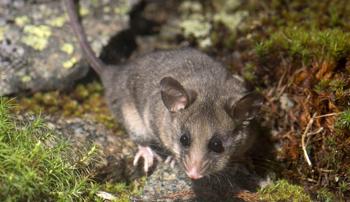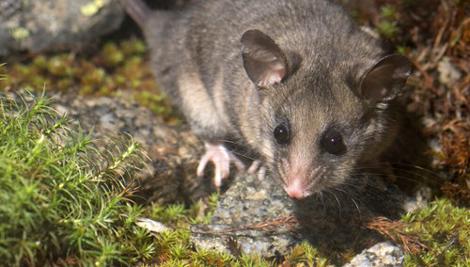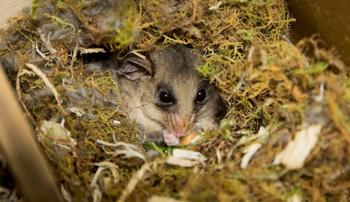Mountain Pygmy-possum
Mountain Pygmy-possums were thought to be extinct until they were rediscovered at Mt Hotham in the 1960s.
There are fewer than 2,000 endangered Mountain Pygmy-possums left in the wild.
The possum is Australia’s only hibernating marsupial; it hibernates for up to seven months under the snow.
There are three populations of Mountain Pygmy-possums. They live in the alpine and subalpine rocks and boulders found in the Bogong High Plains and Mt Buller in Victoria and Mt Kosciuzko in New South Wales.

The major threats
Climate change, the loss of habitat and predators, mainly feral cats and foxes, are all severe threats to the Mountain Pygmy-possum.
An emerging threat is the reduction in the possum's key food source over spring, the Bogong Moth. This is currently a particular focus within the Mountain Pygmy-possum Recovery Team.
Moth Tracker
Each spring, Mountain Pygmy-possums wake up from their annual hibernation, hungry for nutritious Bogong Moths to eat.
Bogong Moths usually fly to the possums' home in the billions, but their numbers have significantly decreased over recent years. This now means that there may not be enough food for these tiny possums to raise their babies. In December 2021, Bogong Moths were added to the IUCN Endangered Species list.
We need Australia's help finding these moths and guiding them to the possums!
It's simple: If you see a Bogong Moth, take a photo and upload it to Moth Tracker, even if you're not sure it's a Bogong Moth. This will help scientists better understand if the moths will make it to the mountains each year.
As well as drought and pesticide use, bright lights from towns and cities are thought to lure and trap the moths along their migration route.


The plan for fighting extinction
Zoos Victoria became involved in the Mountain Pygmy-possum Recovery Program in 2006. Healesville Sanctuary currently holds a large research and breeding population. We also assist with surveying wild populations, helping with habitat connectivity and revegetation, and developing new nutritious food sources like Bogong Bikkies.
Zoos Victoria also leads Moth Tracker, a citizen science project for recording Bogong Moths sightings.
How you can help
- Track any Bogong Moth sightings using Moth Tracker.
- Turn your unnecessary outside lights off in spring.
- Raise community awareness and support for the Mountain Pygmy-possum.
- Do what you can to decrease your carbon footprint.
- Visiting our zoos supports our work to fight extinction.
- Donate if you can. As a not-for-profit organisation, all donations go towards our important conservation efforts.
- Discover more about local conservation events and join the growing number of activists taking action for local wildlife.
Is your classroom learning about the Mountain Pygmy-possum?
Browse through our collection of animal teaching and learning resources for students. These include animal toolkits, e-books, Ask a Zoo Expert resources, video showcases and real-world examples to support the VCE Study Design.
